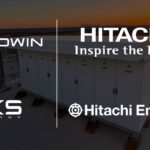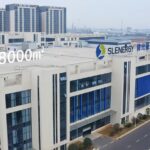ASIA ELECTRONICS INDUSTRYYOUR WINDOW TO SMART MANUFACTURING
TANAKA to Install Fuel Cell toward Zero-Carbon Plants
TANAKA Holdings Co., Ltd. has announced that TANAKA Precious Metals will install a stationary pure hydrogen fuel cell system with a maximum generating capacity of 500kW. This is one of the largest in terms of private-sector use in Japan*1. Particularly, it will put up the fuel cell system at the Shonan Plant in Kanagawa Prefecture, a key recycling business site for TANAKA. It will install an H2Rex™ pure hydrogen fuel cell system manufactured by Toshiba Energy Systems & Solutions Corporation to optimally control generating efficiency. The company eyes the start of operation in 2026.

Initiatives for Achieving Carbon Neutrality
Currently, TANAKA is carrying out Operation Polaris*2 to achieve carbon neutrality by 2050. Specifically, the company aims to achieve at least a 50% reduction in CO2 emissions by 2030 (compared to 2013 levels). To this end, proactive steps are being taken, including enhancing energy efficiency, optimizing manufacturing processes, implementing green energy solutions, and pursuing additional measures aimed at emission reduction. Primarily, the recent decision to use hydrogen energy is a part of these efforts.
Pure Hydrogen Fuel Cell Systems
Mainly, the pure hydrogen fuel cell system generates electricity by making use of a chemical reaction that combines hydrogen and oxygen, the reverse of the electrolysis of water. Also, it directly uses hydrogen to generate electricity. On the contrary, household fuel cell systems extract hydrogen from city gas and other sources. Thus, it can generate electricity with high efficiency and zero CO2 emissions. Additionally, in the event of a disaster, the system can supply backup electric power without interruption. Such systems also give consideration to the local environment, due to their low noise and vibration.
Toward CO2 Emissions Reduction
With the introduction of this system, 25% of the electricity used at the Shonan Plant will be switched to power generated by the fuel cell system. Specifically, the company expects reduction in CO2 emissions of 1,979 tons annually (this and subsequent figures are estimates by TANAKA); this is equivalent to 32% of the plant’s CO2 emissions reduction target for 2030.
Participation in Councils for Achieving Carbon Neutrality
TANAKA will continue to expand its use of hydrogen energy even after the introduction of the system. In conjunction with this, hydrogen demand will increase. It has high hopes for Kawasaki City*3, an advanced hydrogen city in Kanagawa Prefecture. Particularly, it seeks to build a hydrogen supply base in the waterfront area.
Also, TANAKA joined the Kawasaki Carbon Neutral Industrial Complex Formation Promotion Council and the Kawasaki Carbon Neutral Port Formation Promotion Council. Specifically, these two public-private collaborative bodies are made up of companies and other organizations in agreement with the city’s vision and strategies established to investigate and promote measures for achieving carbon neutrality. Accordingly, it hopes to deepen collaboration with the city and other member companies.
*1: As of March 2024, according to research by Toshiba Energy Systems & Solutions
*2: Operation Polaris is a project carried out per the TANAKA Precious Metals Statement on Carbon Neutrality. With Polaris (the North Star) as a symbol of a fixed guide, the project title incorporates the sense of making steady progress toward achieving its CO2 reduction targets.
*3: Kawasaki City (Kanagawa Prefecture) established the Kawasaki Hydrogen Strategy for the Realization of a Hydrogen Society in 2015 and can be said to be an advanced hydrogen city that has carried out various demonstration projects in cooperation with involved companies.
Council website: https://www.city.kawasaki.jp/590/page/0000139903.html
-05 April 2024-




